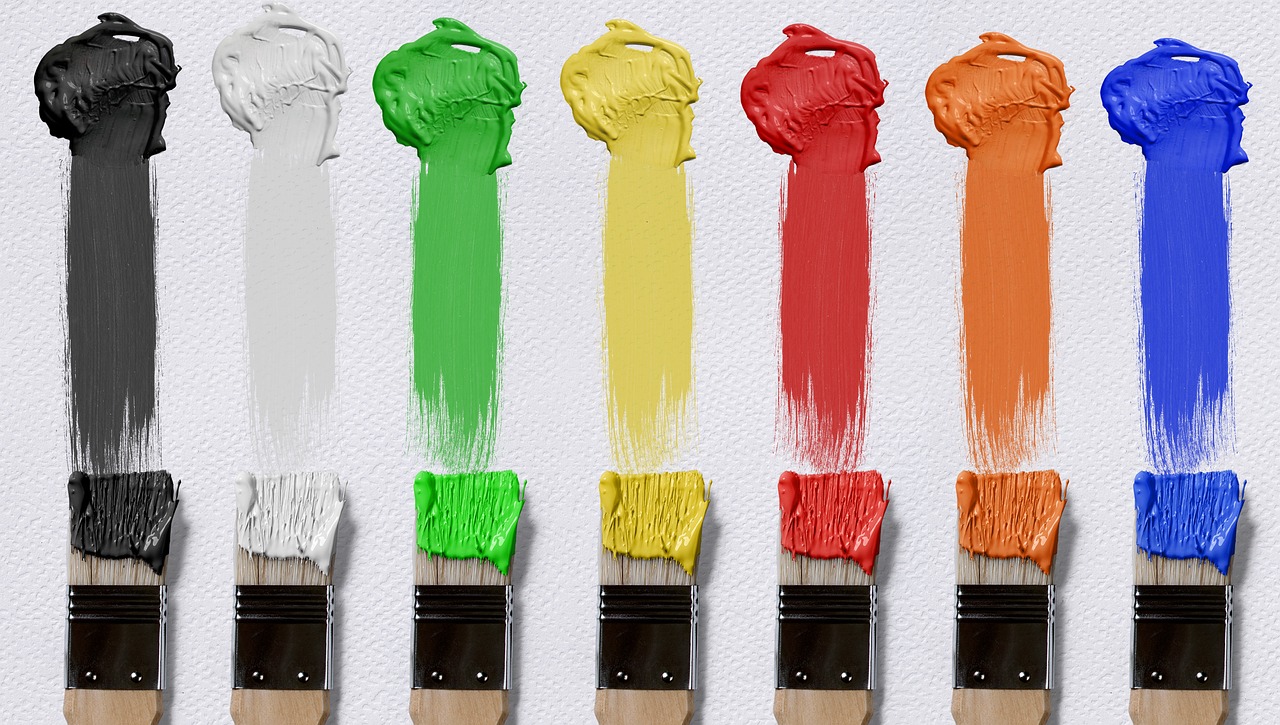Color affects every facet of our lives. The way we react to colors is a combination of physiological, biological, psychological, social and cultural reasons. Color has the ability to soothe and also to stimulate us.
Approximately seven million different colors can be perceived by the human eye, so deciding what you want when decorating, and narrowing your choice down to one color family, still leaves you with millions of variations to choose from. So it’s important to understand the effects of the temperature of color, color components, color terminology, how light affects color and the tricks color can play on color.
A color is described as cool or warm depending on its position in the color spectrum and the hues of its nearest neighboring color.
Warm colors project the hot hues of sunlight and promote a feeling of warmth in a room. They advance space and are used to make walls appear closer. Cool colors reflect the fresh violets and blues of moonlight. They enhance the space in a room by making the walls appear further away.
Red, orange and yellow are warm colors, while violet and blue are cool colors. Green is said to be the most neutral color.
Colors are further categorized into primary, secondary and tertiary colors.
Primary colors are blue, red and yellow. These are pure colors that have no component other than themselves.
Secondary colors are orange, green and purple. These are composed of the primary colors on either side of it on the color wheel. i.e. Orange = red+yellow, Green = blue+yellow, Purple = blue+red.
Tertiary colors are orange-red, orange-yellow, yellow-green, blue-green, blue-purple, and red-purple. Tertiary colors assume more of one color than the other.
Knowing the definition of words used to describe color will help you to indicate your color preference more easily, so some important terminology or jargon to keep in mind when describing color is hue, value and chroma.
Hue refers to, and is another name for, color. For example a blue-patterned carpet has a blue hue.
Value describes the darkness or lightness of a color. A color light in value has been diluted with white. For example, pink is a tint of red that has a light value, because of the white added to it. A dark value color is closer to black on the scale, because it’s had black added to it. For example burgundy is a shade of red with dark value.
Chroma refers to the intensity of a color, how bright or dull it is. Scarlet and brick red are similar in value, but their intensity differs. Brick red is duller as it has a lower chroma than scarlet.
Scarlet has a higher chroma so is more brilliant. Colors with low chroma have more of other colors added to them; those with high chroma are more pure.
Color complements are those colors that work well together. They are diagonally opposite each other on the color wheel. Each complement is made up of the two primary colors either side of it which balances the complement. Each warm color has a cool color as its complement.
Light affects color because in seeing color it’s actually light waves that our eyes perceive. Something has color because of the light it reflects. We all see color slightly differently depending on the perception of the light and color-sensitive receptors in our eyes. So the ability to see color is a sensation, just like smelling or tasting.
Color can play tricks on color. Just as warm colors can make a room appear smaller and cosier, cool colors have the effect of making a space seem larger, more airy.
One corner of a room painted red for example, may appear a different shade from the rest of the room. This is because colors reflect color and light, which slightly changes its appearance and the way our eyes perceive the color. Contrasting color painted on walls that meet in a corner can sometimes be changed so much that they are no longer in harmony with each other. It’s advisable to paint a test patch 12” wide on each side of the corner to view what affect your chosen colors have on each other, before painting the entire room.
Most colors are associated with certain emotions, and this differs somewhat from culture to culture. However I’ve listed some of the most popular color associations.
Red: power, passion, courage, vitality, excitement, strength, speed, love, heart and warmth.
Yellow: light, cheer, sunlight, happiness, creativity, confidence, self-esteem, intellect, innovation.
Blue: caring, devotion, trust, wisdom, peacefulness, serenity, loyalty, truth, coolness, harmony.
Green: nature, fresh, growth, abundance, life, youth, renewal, hope, fertility, peace, balance.
Orange: energy, warmth, contentment, fruitfulness, strength, security, sensuality, abundance.
White: pure light, energy, truth, perfection, serenity, harmony, loyalty, sincerity, clarity.
Black: formal, reserved, drive, dignity, reliability, authority, power, prudence, wisdom, glamour.
Take some time to consider the effects of color on the individuals who will be frequenting the environment you create when decorating. When choosing color take into account whether you are trying to soothe or stimulate, and be aware of the effects of color on the well-being of the inhabitants you are decorating for.
The Author:
Nell Frances is author of the Step-by-Step Guide to Baby Room Projects Ebook and brings over 20 years decorating experience to her articles. She’s helped families decorate using minuscule budgets and zany ideas, to create baby rooms and child spaces that echo with squeals of delight!
Photo. Dorothe
